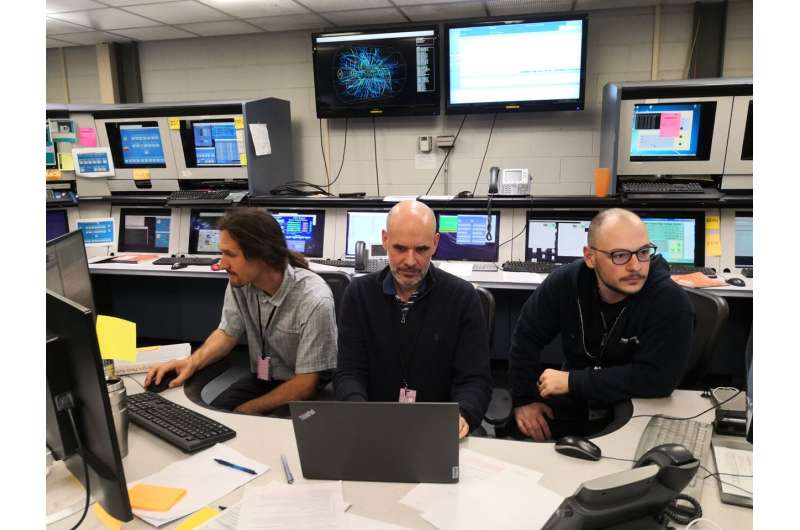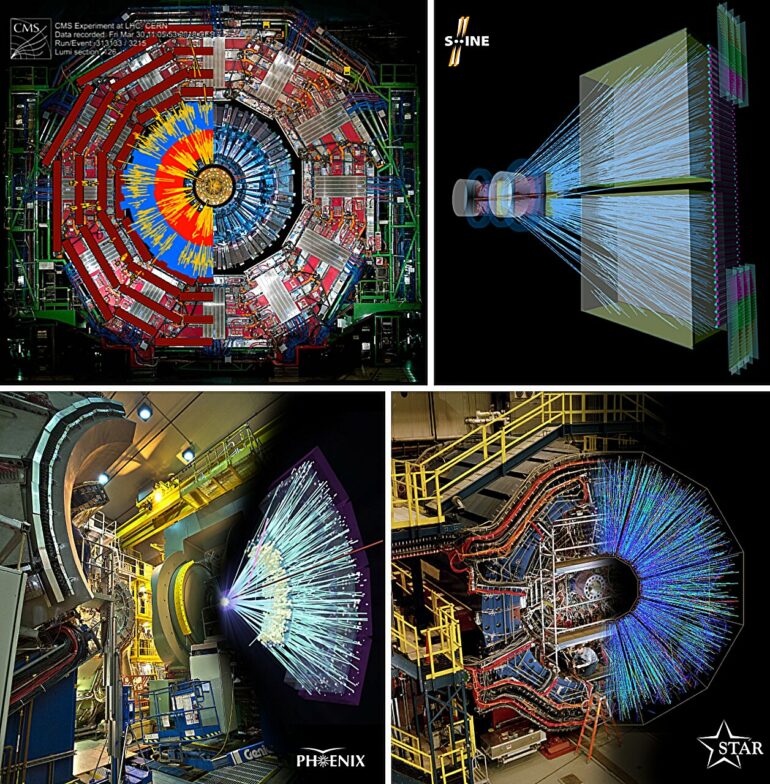Physicists from the Eötvös Loránd University (ELTE) have been conducting research on the matter constituting the atomic nucleus utilizing the world’s three most powerful particle accelerators. Their focus has been on mapping the “primordial soup” that filled the universe in the first millionth of a second following its inception.
Intriguingly, their measurements showed that the movement of observed particles bears resemblance to the search for prey of marine predators, the patterns of climate change, and the fluctuations of stock market.
In the immediate aftermath of the Big Bang, temperatures were so extreme that atomic nuclei could not exists, nor could nucleons, their building blocks. Hence, in this first instance the universe was filled with a “primordial soup” of quarks and gluons.
As the universe cooled, this medium underwent a “freeze-out,” leading to the formation of particles we know today, such as protons and neutrons. This phenomenon is replicated on a much smaller scale in particle accelerator experiments, where collisions between two nuclei create tiny droplets of quark matter. These droplets eventually then transition into the ordinary matter through freeze-out, a transformation known to researchers conducting these experiments.
However, the properties of quark matter vary due to differences in pressure and temperature that result from the collision energy in particle accelerators. This variation necessitates measurements to “scan” matter in particle accelerators of different energies, the Relativistic Heavy Ion Collider (RHIC) in the U.S., or the Super Proton Synchrotron (SPS) and the Large Hadron Collider (LHC) in Switzerland.
“This aspect is so crucial that new accelerators are being constructed all over the world, for example in Germany or Japan, specifically for such experiments. Perhaps the most significant question is how the transition between phases occurs: a critical point may emerge on the phase map,” explains Máté Csanád, professor of physics at the Department of Atomic Physics, Eötvös Loránd University (ELTE).
The long-term goal of the research is to deepen our understanding of the strong interaction that governs the interactions in quark matter and in atomic nuclei. Our current level of knowledge in this area can be likened to humanity’s grasp of electricity during the eras of Volta, Maxwell or Faraday.
While they had a notion of the fundamental equations, it took a considerable amount of experimental and theoretical work to develop technologies that have profoundly transformed everyday life, ranging from the light bulb to televisions, telephones, computers, and the internet. Similarly, our understanding of the strong interaction is still embryonic, making research to explore and map it vitally important.

Researchers of the Eötvös University working on the data taking of the STAR experiment at the Brookhaven National Laboratory. © Máté Csanád / Eötvös Loránd University
Researchers from ELTE have been involved in experiments at each of these accelerators mentioned above, and their work over the past few years has led to a comprehensive picture of the geometry of quark matter. They achieved this through the application of femtoscopy techniques. This technique utilizes the correlations that arise from the non-classical, quantum-like wave nature of the particles produced, which in the end reveals the femtometer-scale structure of the medium, the particle-emitting source.
“In the previous decades, femtoscopy was operated on the assumption that quark matter follows a normal distribution, i.e., the Gaussian shape found in so many places in nature,” explains Márton Nagy, one of the group’s lead researchers. However, the Hungarian researchers turned to the Lévy process, which is also familiar in various scientific disciplines, as a more general framework, and which is a good description of the search for prey by marine predators, stock market processes and even climate change.
A distinctive trait of these processes is that at certain moments they undergo very large changes (for example, when a shark searches for food in a new area), and in such cases a Lévy distribution rather than a normal (Gaussian) distribution can occur.
This research holds significant importance for several reasons. Primarily, one of the most studied features of the freeze-out of quark matter, its transformation into conventional (hadronic) matter, is the femtoscopic radius (also called HBT-radius, noting its relation the well-known Hanbury Brown and Twiss effect in astronomy), which is derived from femtoscopic measurements. However, this scale depends on the assumed geometry of the medium.
As Dániel Kincses, a postdoctoral researcher in the group, summarizes, “If the Gaussian assumption is not optimal, then the most accurate results from these studies can only be obtained under the Lévy assumption. The value of the ‘Lévy exponent,’ which characterizes the Lévy distribution, also may shed light on the nature of the phase transition. Thus, its variation with collision energy provides valuable insight into the different phases of quark matter.”
Researchers from ELTE are actively participating in four experiments: NA61/SHINE at the SPS accelerator, PHENIX and STAR at RHIC, and CMS at the LHC. The NA61/SHINE group of ELTE is led by Yoshikazu Nagai, the CMS group by Gabriella Pásztor; and the RHIC groups by Máté Csanád, who is also coordinating ELTE’s femtoscopy research.
The groups are making substantial contributions to the success of experiments in various capacities, ranging from detector development to data acquisition and analysis. They are also engaged in many projects and theoretical research. “What is unique about our femtoscopy research is that it is carried out in four experiments in three particle accelerators—giving us a broad view of the geometry and possible phases of quark matter,” states Máté Csanád.
The team presented their latest findings at the Workshop on Particle Correlations and Femtoscopy, held 6–10 November 2023. As part of large-scale collaborations, they have also published related research in The European Physical Journal C, Physics Letters B and Universe.
More information:
Márton Nagy et al, A novel method for calculating Bose–Einstein correlation functions with Coulomb final-state interaction, The European Physical Journal C (2023). DOI: 10.1140/epjc/s10052-023-12161-y
Balázs Kórodi et al, Event-by-event investigation of the two-particle source function in sNN=2.76 TeV PbPb collisions with EPOS, Physics Letters B (2023). DOI: 10.1016/j.physletb.2023.138295
Bálint Kurgyis et al, Coulomb Corrections for Bose–Einstein Correlations from One- and Three-Dimensional Lévy-Type Source Functions, Universe (2023). DOI: 10.3390/universe9070328
Barnabás Pórfy, Femtoscopic Correlation Measurement with Symmetric Lévy-Type Source at NA61/SHINE, Universe (2023). DOI: 10.3390/universe9070298
Ayon Mukherjee, Kaon Femtoscopy with Lévy-Stable Sources from sNN=200 GeV Au+Au Collisions at RHIC, Universe (2023). DOI: 10.3390/universe9070300
László Kovács, Charged Kaon Femtoscopy with Lévy Sources in sNN = 200 GeV Au+Au Collisions at PHENIX, Universe (2023). DOI: 10.3390/universe9070336
Provided by
Eötvös Loránd University
Citation:
Using the world’s three most powerful particle accelerators to reveal the space-time geometry of quark matter (2023, November 27)



